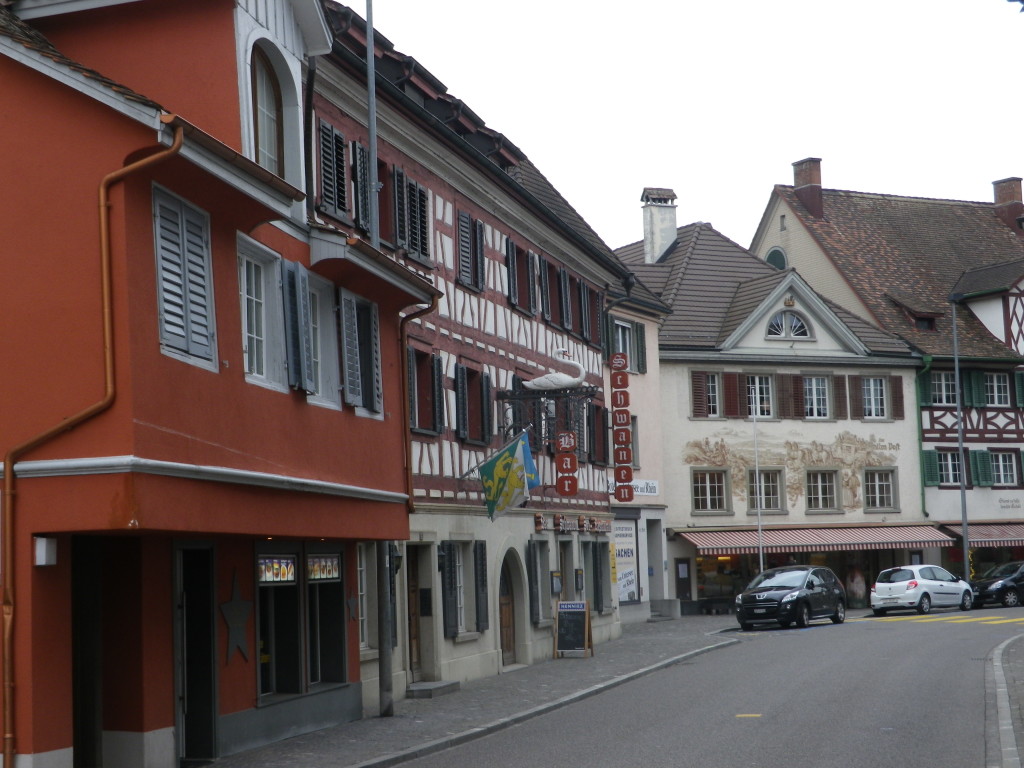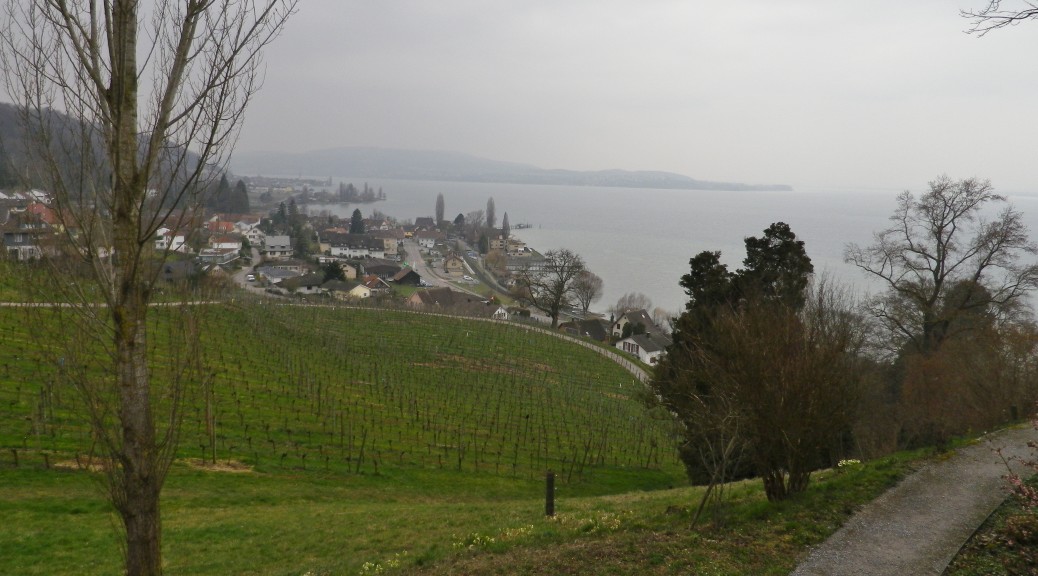The Lake Constance Region tourism information promotes its “Mediterranean feel”. Nonetheless, the weather can be cold, wet, and windy, especially in early spring or late fall. (See the photo below.) Vintners here would often suffer bad harvests for years in a row. But thanks to local man, Hermann Mueller, the industry gained a new lease on life.
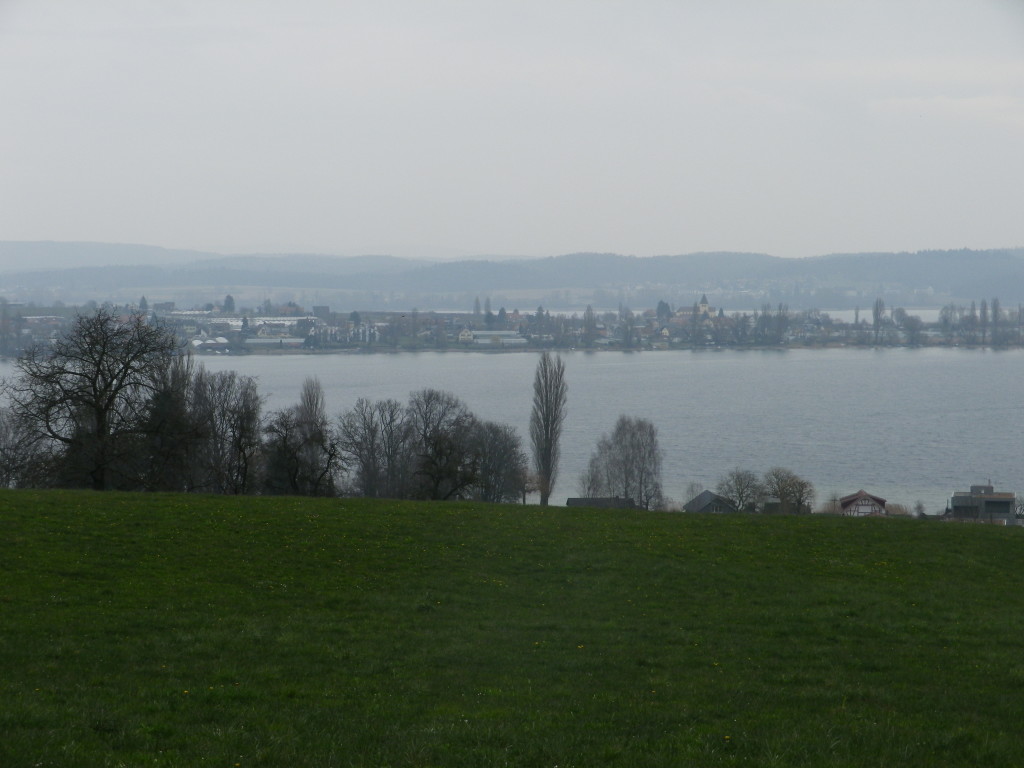
This hiking trail was dedicated to discovering the viticultural and vinicultural history of the area. It starts in Taegerwilen at the birthplace of Dr. Mueller, a botanist and oenologist, born in 1850. Looking to help local vintners, whose primarily north-facing slopes outside his home town faced particularly tough grape ripening conditions, he cross-bred Riesling and Madeleine Royale grapes, resulting in the tougher, and early-ripening Mueller-Thurgau grape. Named after him and his home canton, he, himself, later appended the word “Thurgau” onto his surname.
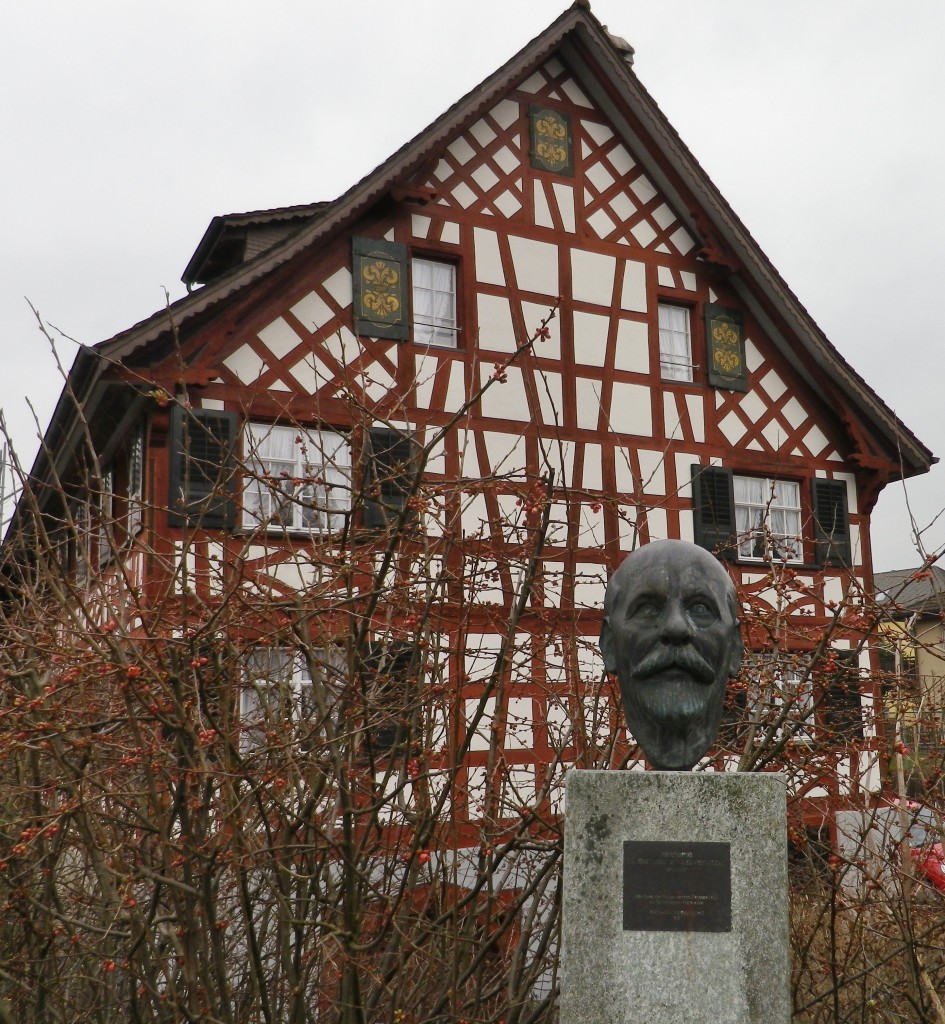
From his birthplace, the trail meanders through the village of Taegerwilen, along back lanes he would have known well, and then into the local vineyards. The education boards about wine-making in this area began here. From the heights above Triboltingen, Kreuzlingen (the Swiss town contiguous with Constance) where he went to high school, comes into view. Across the lake, lies the island of Reichenau, where in the early middle ages, monks planted grapes to supply their monastery with wine. In the distance, a series of ridges ranges away into Germany, where he would ultimately go to study and work.
The village of Ermatigen follows, with three attractions and one curiosity to catch your attention. The curiosity, one I have seen throughout Switzerland, is whole tableaux of garden gnomes. Along this trail, I came across three rather large ones. Often slightly quirky, they are arranged in groupings in gardens with modest plantings. The focus is definitely on the gnomes.
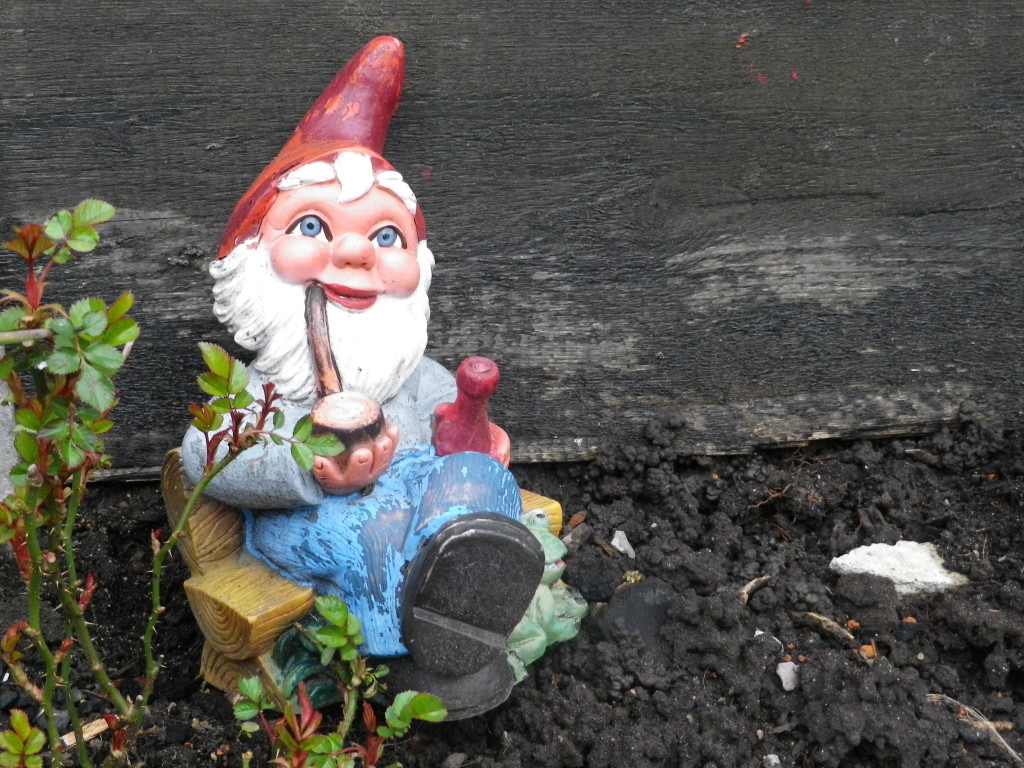
and in another garden…
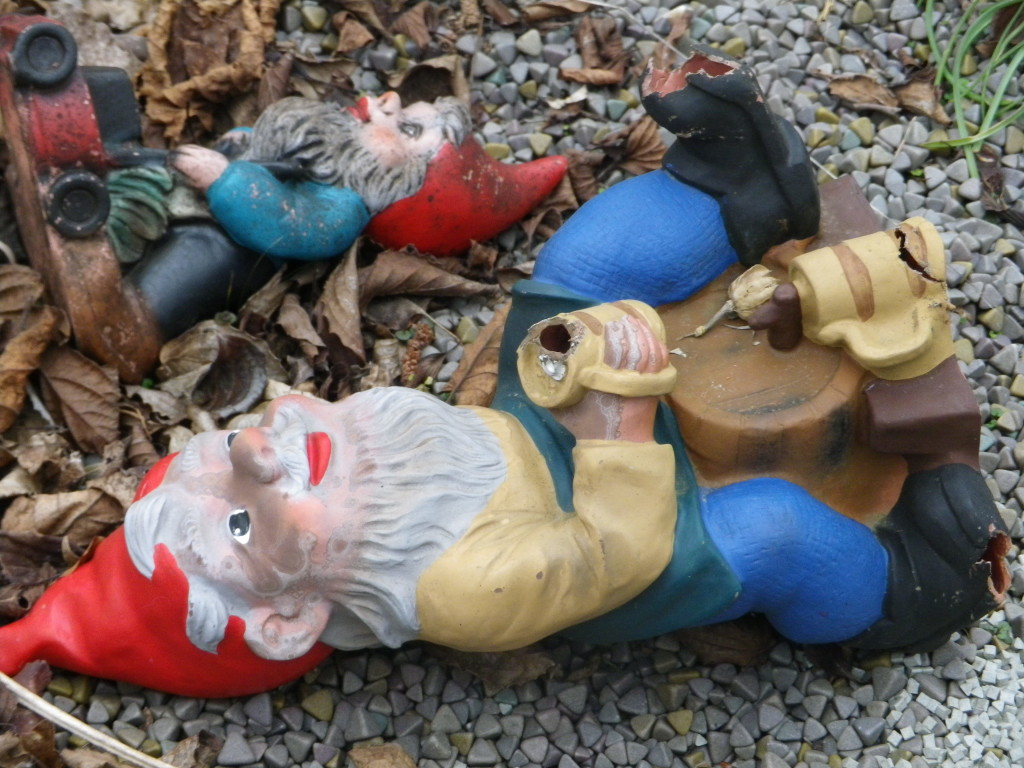
The more traditional attractions include the Vinorama Museum in Ermatingen, which is all about the wine in this region. Next along the trail is the Arenenberg Palace, home not only to its own vineyards, but also to Napoleon III in the 19th century. Pleasantly situated right on the trail on a hill outside of town, it is worth a visit for its views, gardens and its museum dedicated to the family. A short distance later is the Castle Salenstein, dramatically perched above the path. While not open for visits, it is wonderfully placed for photo opportunities, of both it and the surroundings.
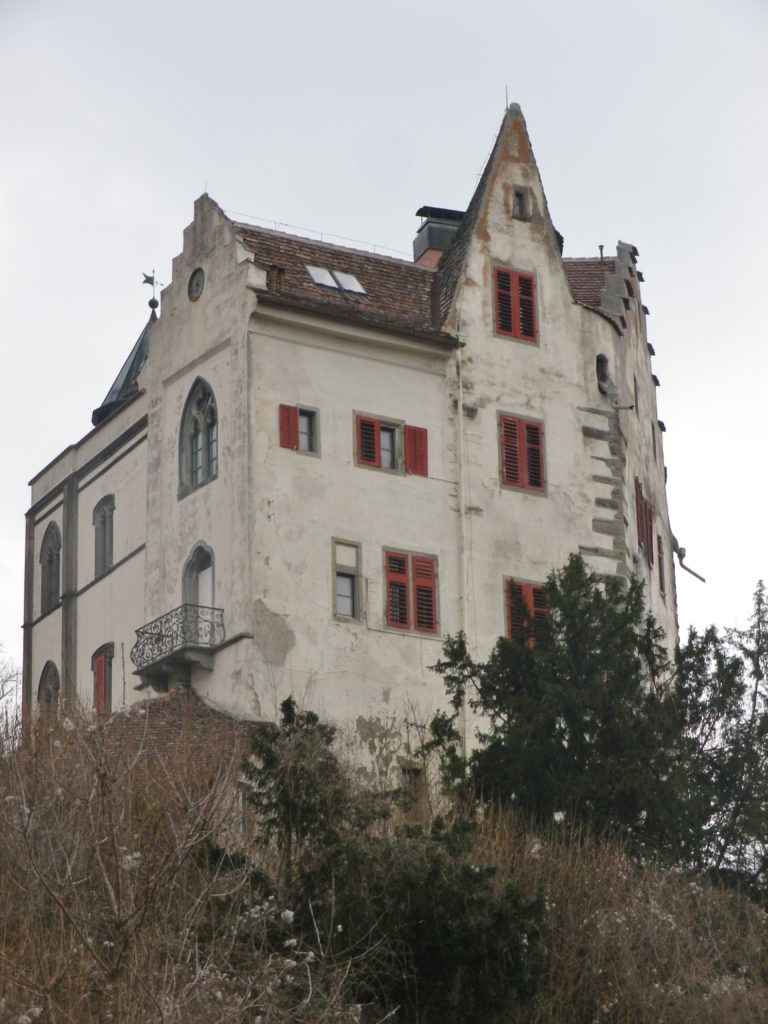
But rather than heading up to it, the trail leads down to the shoreline. Changes in scenery and trail surface changed with the elevation. Once by the lakeside, reeds predominated. Climbing up through the village and past the vineyards, high fields were covered with grazing sheep. Climbing higher, the trail entered woodlands. At one point rather high above the lake, a sandy bluff was eroding. At another point, a dramatic rocky outcropping had to be walked around. Heading downhill, orchards and fields interspersed with vineyards until the edge of Steckborn.
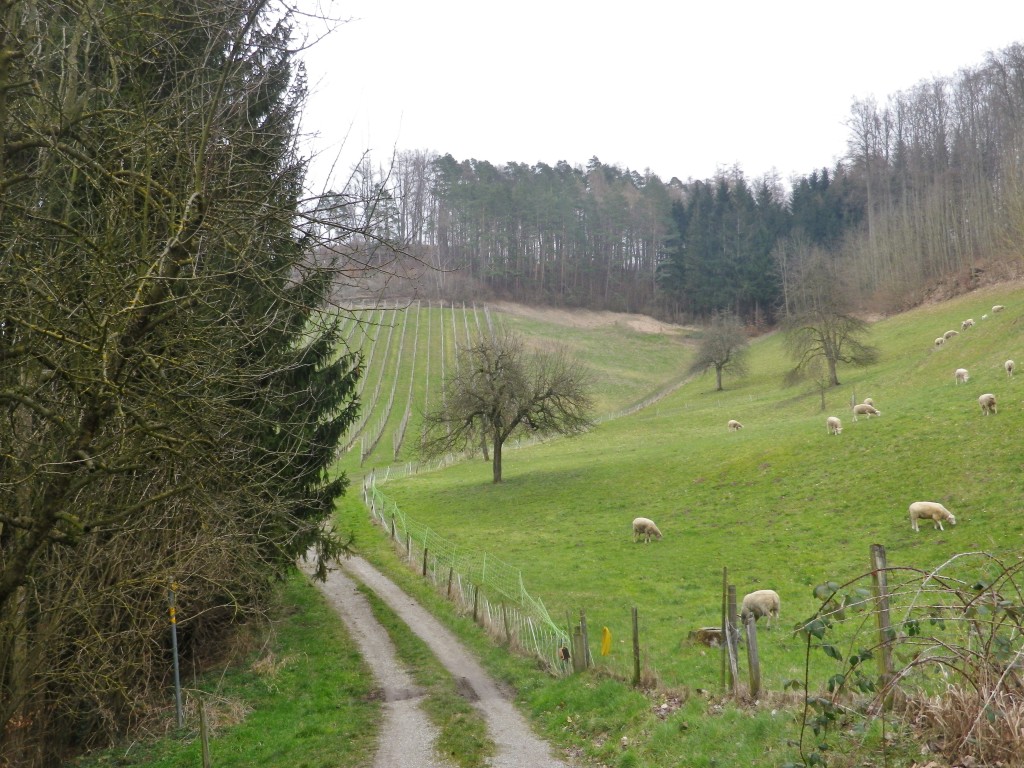
This lakeside town has an old street running along the water’s edge. One of the old houses lining this street contains a wine shop with not only a decent selection of local wines, but also decent open hours. There, the knowledgeable wine-seller introduced me to a couple of different Mueller-Thurgau wines from local producers, while underscoring the importance of Dr. Mueller’s efforts in helping local wine-producers. Thus the trail ended where it had begun: in a tribute to Dr. Mueller-Thurgau and his grape.
